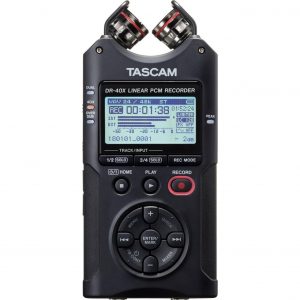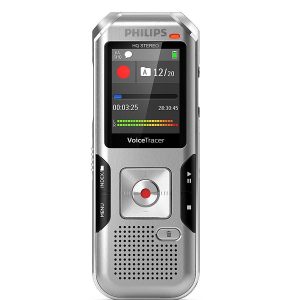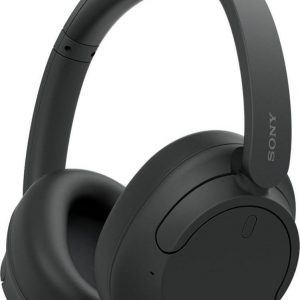Description
Philips LFH3500 Audio Recorder
The Philips LFH3500 audio recorder is a device that offers superior audio quality and easy operation for professionals who need to quickly capture spoken information. It is one of the industry’s most advanced digital dictation devices and offers features that make it extremely useful in a busy working environment.
Design & Build
The Recorder is a compact, lightweight, and durable device that fits neatly into any pocket or bag. It measures approximately 4.8 x 1.5 x 0.7 inches and weighs just 1.6 oz.
The device comes with a built-in, high-quality microphone that records every detail of the speaker’s words, thanks to its advanced noise reduction technology. It can also be used with external microphones for more precise recording.
The recorder has a 2GB built-in memory that can store up to 26 hours of high-quality audio recordings. The device can also be expanded with a 32GB Micro SDHC card, enabling users to store thousands of hours of recordings.
Features and Functionality
The Philips LFH3500 audio recorder has numerous features designed to provide the best possible recording experience, including:
1. Voice-activated recording: This feature automatically starts recording when the user speaks, eliminating long silent periods.
2. Sound quality and clarity: The recorder comes with an advanced stereo recording feature that ensures clear and accurate recordings.
3. Pin code protection: The device has a pin code protection feature that prevents unauthorized access to the recordings.
4. File management: The device supports four folders, which can be customized to suit the user’s needs. Files can also be easily transferred to a computer using the USB port.
5. Large display: The recorder has a large LCD display that shows important information like the battery level, recording time, and file name and number.
Conclusion
The Philips LFH3500 audio recorder is a powerful tool for anyone who needs to record spoken information regularly. Its advanced features, high-quality recording capabilities, and easy-to-use design make it a valuable investment for professionals in various fields.
Whether you’re a journalist conducting interviews, a doctor recording patient notes, or a student recording lectures, the Philips LFH3500 audio recorder is an excellent choice for quick, easy, and reliable recording.
Dictaphone, Built-in Microphone, Microphone: Built-in Microphone Weight: 200 g
Philips, LFH3500 properties
| Product name | LFH3500 |
| Type | Dictaphone |
| Built-in Speakers | Yes |
| Built-in Memory | No |
| Display | No |
| USB Input | 1 |
| Colour | Gray, White |
| Microphone | Built-in Microphone |
| Amount of Microphones | 1 |
| Frequency Range Microphone Min | 200.0 |
| Frequency Range Microphone Max | 12000.0 |
| Height | 32.0 mm |
| Depth | 175.0 mm |
| Width | 45.0 mm |
| Weight | 200.0 g |













Samson Shortle –
The microphone gives the impression of being soldiny (time will verify:]), it looks very good (although attaching a transparent cable is a terrible idea). No compatibility issues (win10home64b). Despite the huge BTS 400m from the house, I have no problems with the collected sound for which it deserves a huge plus (the competing Superlux E205u did not cope with it).
The only problems I noticed were the uneven illumination of the basket and the lack of any tripod in the set (seriously … even a tripod .-.). Anyway, I am very positively surprised ^^
Oscar –
Review of Philips LFH3500
My name is Oscar and I recently visited Tulsa for a business trip. During my stay at Fairfield Inn & Suites by Marriott Tulsa Downtown, I had the opportunity to use the Philips LFH3500 audio recorder. Overall, I must say that this device fulfilled my expectations at around 80 percent.
When comparing the Philips LFH3500 to other popular audio recorders on the market, I found that it stood out in certain aspects. One key feature that sets it apart is its compact design and ease of use. The LFH3500 is small and lightweight, making it convenient to carry around during meetings or interviews. Its simple interface makes it user-friendly, even for those who are not tech-savvy.
In terms of technical aspects, the Philips LFH3500 offers excellent audio quality. The built-in stereo microphone captures clear and crisp sound, ensuring that every detail is recorded accurately. This is particularly important for business professionals who rely on accurate transcriptions or for those who need to capture important conversations or interviews.
Another unique aspect of the LFH3500 is its voice activation feature. This means that the device starts recording automatically as soon as it detects sound, which is incredibly useful for hands-free operation. It eliminates the need to constantly press the record button and ensures that no important moments are missed.
However, one aspect of the Philips LFH3500 that could be improved is its lack of a display. Unlike some other audio recorders on the market, the LFH3500 does not have a built-in display. This makes it slightly more challenging to navigate through recordings or adjust settings. Nonetheless, the device compensates for this by having clearly labeled buttons and an intuitive interface.
Overall, the Philips LFH3500 audio recorder is a reliable and efficient device that delivers on its promises. With its compact design, excellent audio quality, and voice activation feature, it surpasses many other popular audio recorders in the market. Although it lacks a display, its user-friendly interface makes up for this minor drawback. If you are in need of a portable and reliable audio recorder for your business needs, the Philips LFH3500 is definitely worth considering.